#user experience designer
Text

I'm fed up with "maybe later".
87K notes
·
View notes
Text

As a leading SEO Company in Delhi, we excel in delivering top-notch services to optimize both the backend and frontend of your site, enhancing traffic and sales with our expertise in Technical SEO and Ecommerce SEO. Our specialized Google Penalty Recovery service is swift and efficient, ensuring your site regains its credibility. At the forefront of innovative Website Designing, we provide custom solutions for both Local Business Websites and E-commerce Websites, focusing on superior UX/UI for the best user experience. Our comprehensive approach also includes dynamic Social Media Management and creative Video Production, setting new standards in digital excellence if you want to know more about us just call us +918282824232 or go to https://amittiwari.net/
1 note
·
View note
Text

Experienced freelance UI UX designer based in Melbourne. I specialize in UX/UI, web, and mobile app design. I have crafted a wide range of responsive websites for online businesses, e-commerce websites, and user interfaces for Software as a Service (SaaS) applications as a Web & App Designer in an agile environment. Contact us for more information!
#UI UX Designer Melbourne#Freelance UI UX Designer Melbourne#UX UI Designer Melbourne#Freelance UI UX designer#UI Designer Melbourne#UX Designer Melbourne#Freelance UX UI Designer Melbourne#Freelance UX Designer#Freelance UI Designer#Freelance UI Designer Melbourne#Freelance UX Designer Melbourne#Mobile App UX UI Designer#Product Designer#Digital Designer#User Experience Designer
0 notes
Text
Top 10 Best UI Design Portfolios That Will Influence You
In this blog, we share the top 10 best UI design portfolios that will affect you. These portfolios will help you and inspire you to create interesting and special portfolios that reflect your skills, imagination, and body of work, which will help you get discovered by clients and employers.
visit:-https://forcenewz.com/best-ui-design-portfolios/

#3d illustrations#aphonic solutions#environmental graphics#excellent introduction increases#graphic design company in rajkot#human-centered designer#product designer#stefan's portfolio#top website development company in india#ui design#ui design portfolio#ui designer#ui/ux designer#user experience designer
0 notes
Text
It's actually kind of impressive how ill-conceived this whole "Notes Preview" business is. At a single stroke, it's been rendered impossible to curate one's experience even on one's own dashboard – now it doesn't matter that you've carefully followed a group of blogs you can trust not to reblog noxious bullshit, because with every post that crosses your dash there's now a chance that Tumblr will automatically append some random asshole's opinion about that post, in a way that neither you nor the person you're following can predict. Bravo.
36K notes
·
View notes
Text
User Experience Designer
Are you interested in becoming a user experience designer? At Mastercreationz, we're always on the lookout for talented individuals who are passionate about delivering outstanding UI solutions. #Mastercreationz #UserExperienceDesigner #JoinOurTeam https://mastercreationz.com/user-experience-for-mobile-applications-and-websites
0 notes
Text
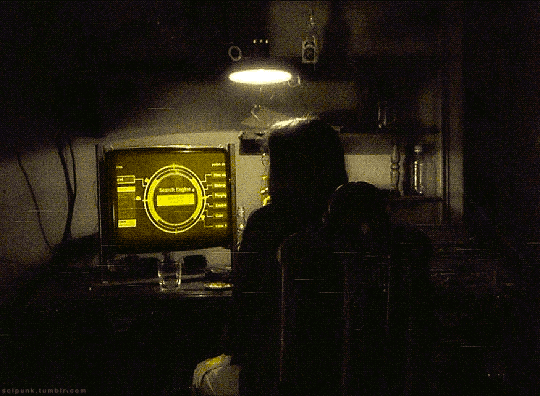



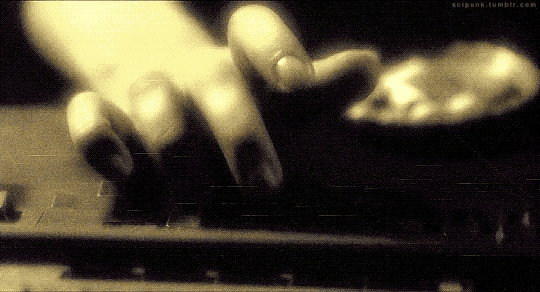


Avalon (2001)
#cyberpunk aesthetic#cyberpunk#scifi movies#00s#graphic design#cyberpunk movies#aesthetic#user interface#dystopian aesthetic#noir aesthetic#computer terminal#user experience#gifs#movie gifs#gifset#film gifs
1K notes
·
View notes
Text
yeah hi excuse me @staff / @humans-
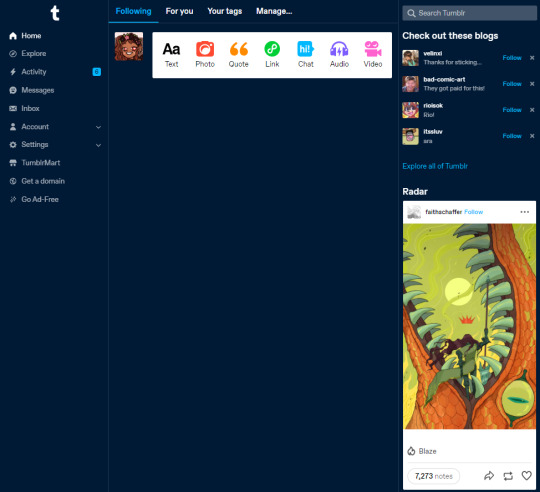
absolutely not
absolutely fucking not

idk if i have the clearance to say "on behalf of everyone" but this ain't it and i shouldn't even have to be the one to tell you that
#i guarantee you there is zero design philosophy behind this#it in no way 'improves tumblr' or cares about the 'user experience#it is not a 'fix'#there is are no principles or deeper 'core strategies' here#it's literally just 'lol let's copy that app we know all our users hate'#like did they think we liked twitter before it got bought out by musk ???#tumblr#tumblr update#tumblr staff#staff
378 notes
·
View notes
Text
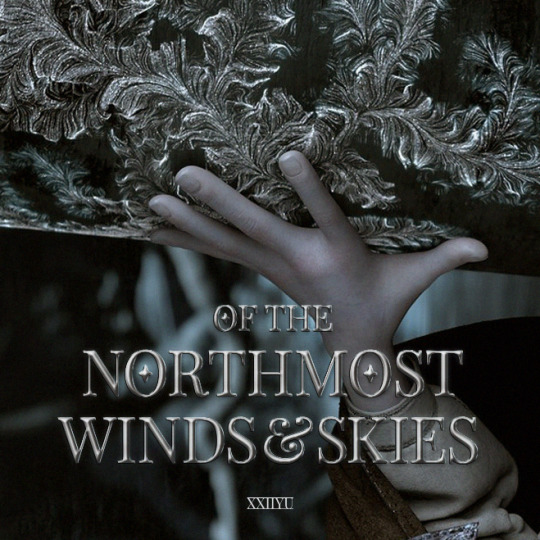
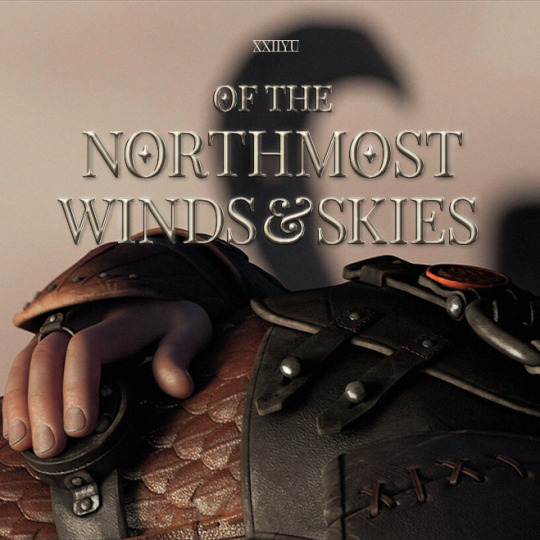
made matching hijack covers for my curated otnwas playlist that i've been having on repeat for the past month if any of u want to listen 🤞🏽
#otnwas#of the northmost winds and skies#hijack#frostcup#spent my entire morning editing and designing this instead of working lmfaooo oops what my boss doesn't know won't hurt him#had to dig through httyd2 screencaps to find closeups of hiccup's HANDS bc i wanted them to match#it was a MISSION i'm telling u but it worked out i think . maybe.. the vibe is there#if anything i love how jack's one turned out#i'm actually working on a more customized ver. of the title with more fun big swirly glyphs but i haven't finished sooo#experiments with normal type it is#some songs in there i found from the otnwas tag (shout out tumblr user alkalinefrog 🙏🏽)#anyways ENJOY#mp3#jackshiccup text#the last third is basically just instrumentals which are specific httyd + rotg soundtracks back to back that i think flow well together#it's kinda like the overall journey or whatever ...... if u listen maybe u will get my thought process kjahdakj#Spotify
106 notes
·
View notes
Text
Product design and psychology: The Role of Grinding in Video Game Design
Keywords: Grinding, Video Gaming, Game Design, Player Engagement, Psychological Manipulation
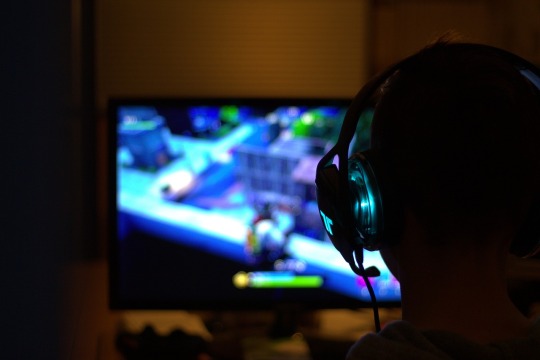
Abstract:
This paper scrutinizes the utilization of "grinding" as a technique in video game design, particularly as a method of psychological manipulation that affects player engagement and behaviour. Case studies are explored to deliver a comprehensive understanding of the practical application of grinding and its implications, all from a product design viewpoint.
Introduction:
The design principles governing video games frequently incorporate mechanisms intended to stimulate player engagement and prolong interaction time. One such prevalent mechanism is "grinding," defined as the practice of executing repetitive tasks within the game environment to achieve specific objectives. While grinding can evoke a sense of achievement, it also carries the potential to induce exhaustion and frustration among players. This study endeavours to explore the intricacies of grinding, its role in game design, and its influence on player experience.
Explanation:
Coined from the concept of persistently "grinding away" at a task, the term "grinding" in the gaming context implies the undertaking of repetitive actions by a player to attain certain results or to advance within the game. In numerous instances, such actions may not directly correlate with the game's primary storyline or objectives but are aimed at accumulating experience points, in-game currency, or specialized items.
Grinding is an omnipresent component across a vast array of game genres, with its prominence notably manifested in Massively Multiplayer Online Role-Playing Games (MMORPGs). In these games, the player's progression and performance are often gauged based on their character's level, skills, and available equipment.
From the standpoint of game design, grinding assumes several roles. It serves to extend the game's lifespan by instituting goals that necessitate substantial time investment. Additionally, it fosters a sense of accomplishment and progression and can encourage social interaction in multiplayer environments. Despite these advantages, critics contend that grinding can lead to monotonous and ungratifying gameplay experiences. The considerable time commitment required by grinding may propel some players towards purchasing in-game enhancements using real-world money, thereby generating additional revenue for game developers.
Further, there is an ongoing discourse concerning the psychological implications of grinding. Its repetitive and rewarding nature might precipitate addictive behaviours and excessive consumption of time, mirroring the effects typically associated with gambling disorders. Through the exploration of these aspects, we aim to shed light on the complex dynamics of grinding in the context of modern video gaming.
Grinding in Gaming: Conceptualization and Design
Grinding typically refers to the act of performing repetitive actions in a game to attain a specific goal, often associated with levelling up, obtaining items, or advancing in-game skills. Although it can give players a sense of progression, it can also serve as a roadblock, encouraging players to consider alternative paths to progress, such as microtransactions.
Case Study: World of Warcraft
Blizzard Entertainment's World of Warcraft (WoW) extensively employs grinding. Players often engage in repetitive tasks like fighting the same enemies, repeatedly battling against non-player characters (NPCs), or completing the same quests to increase their character's level, to gain experience points, in-game currency, or rare items. This grind contributes to a sense of achievement but has also been criticized for sometimes leading to a tedious gameplay experience.
youtube
Case Study: Candy Crush Saga
King's Candy Crush Saga uses grinding as a monetization strategy. As players progress and levels become harder, the option to grind through the game becomes more attractive. Alternatively, players can buy power-ups and boosters to surpass the grind, effectively translating grinding mechanics into revenue for the game developers.
Case Study: Destiny 2
This game provides an example of a 'loot grind.' Players repeatedly complete activities like strikes, raids, or public events to earn 'engrams' – randomized gear drops. The goal is often to collect more powerful gear to increase a character's power level.
youtube
Case Study: Old School RuneScape
In this MMORPG, players might grind by repetitively performing tasks like mining, fishing, or woodcutting. These actions, though monotonous, boost the player's skill levels, enabling them to perform new tasks, quests, or create new items.
Implications for Game Design
Grinding, while a tool to extend game playtime and potentially drive monetization, must be thoughtfully implemented to avoid player fatigue or burnout. Game designers should strike a balance between meaningful progression and repetitive grind, ensuring the game remains engaging and satisfying.
Conclusion
Grinding, as a mechanism of psychological manipulation in video game design, can greatly impact player behaviour and engagement. Striking a balance between challenge, satisfaction, and repetition is vital to ensure a rewarding gameplay experience. As the video game industry advances, it will be intriguing to observe the evolution and refinement of grinding mechanisms and their psychological impact on players.
References:
Sicart, M. (2013). Grinding in Games: Understanding the Appeal. Philosophy of Computer Games Conference, 8-11.
Hamari, J., Alha, K., Järvelä, S., Kivikangas, J. M., Koivisto, J., & Paavilainen, J. (2017). Why do players buy in-game content? An empirical study on concrete purchase motivations. Computers in Human Behavior, 68, 538-546. doi:10.1016/j.chb.2016.11.045
Blizzard Entertainment. (2004). World of Warcraft [Video Game]. Blizzard Entertainment.
King. (2012). Candy Crush Saga [Video Game]. King.
Bungie. (2017). Destiny 2 [Video Game]. Activision.
Jagex. (2013). Old School RuneScape [Video Game]. Jagex.
Yee, N. (2006). Motivations of play in online games. CyberPsychology & Behavior, 9(6), 772-775. doi:10.1089/cpb.2006.9.772
Johnson, M. R., & Woodcock, J. (2019). The impacts of live streaming and Twitch.tv on the video game industry. Media, Culture & Society, 41(5), 670-688. doi:10.1177/0163443718818363
King, D., Delfabbro, P., & Griffiths, M. (2010). Video game structural characteristics: A new psychological taxonomy. International Journal of Mental Health and Addiction, 8(1), 90-106. doi:10.1007/s11469-009-9206-4
Deterding, S., Dixon, D., Khaled, R., & Nacke, L. (2011). From game design elements to gamefulness: defining "gamification". MindTrek '11: Proceedings of the 15th International Academic MindTrek Conference: Envisioning Future Media Environments, 9-15. doi:10.1145/2181037.2181040
#Grinding#Video Gaming#Game Design#Player Engagement#Psychological Manipulation#product design#gaming#user experience#player behaviour#destiny 2#world of warcraft#runescape#old school runescape#candy crush#Youtube
73 notes
·
View notes
Text
#all the coding credit goes to my partner in crime but i was involved in project managing and user experience design#star wars#bed wed behead#clone wars#the clone wars#the bad batch#the mandalorian
48 notes
·
View notes
Note
hi zesty :)))))
idk if you've gotten this question before, but i was wondering how you ended up studying psych while working as a software engineer. they're both super cool fields but they have very opposite vibes, imo (as someone with minimal understanding of them, lmao).
no pressure to answer and i hope you have a wonderful day, friend <3333333
-zipstidbits (i can't send asks from sideblogs ;-;)
hi zip! ☺️ i feel like i must have explained it at some point but i can't remember either 😆 okay, brace yourself for a very long response 😛
they're actually quite interconnected, at least for the kind of engineering that i enjoy. how i figured out what i enjoyed was kind of a painful process though 😅
*insert stereotypical flashback/memory effect*
Software Engineer Finds Herself Storytime
i started considering product management, user experience/user interface design, user experience/psychology research, and really anything but engineering because i felt i really sucked at it in comparison to the amazing talent of my peers and seniors. i just didn't care as much about the highly technical things that got them so fired up and after spending so much time and energy trying to make it work and make myself care, i realized i couldn't, not in the same way at least.
so i had a chat with a girl who used to be a software engineer but switched to product management and thought she was super cool and just having a blast being a total boss queen 👑 i had chats with designers who have such a good grasp of color theory (my nemesis), how the heck to use Figma (my other nemesis), and have this incredible attention to detail 🕵️♀️ and i had chats with engineering managers vs. technical leads, which is honestly where i should have started because it made the disconnect and therefore what i actually naturally gravitated towards really clear.
i started leading team meetings, then projects where i could influence product direction from an engineering standpoint, and decided not to switch to something else after all! (but i still want to develop my psychology knowledge to make me a better engineer, hence my degree.) the key thing is, instead of trying to be like "everyone else," i only started to care about good engineering when i leaned into what i naturally get fired up about — a good product experience for users and a good development experience for engineers.
in summary, psychology is really influential in:
good design principles — e.g. is it intuitive? convenient? (or sometimes, how do we make certain actions as unintuitive and inconvenient as possible because those actions would lead to user error)
good people management — applicable whether you're actually leading a project/team or just having a conversation or paired programming session, knowing others x knowing yourself = ✨success✨
they are kind of "opposites" still in a way, but every team needs a good balance and i've started to carve out my role/niche on my team this way ☺️ thanks for this ask, zip! hope you have a lovely day too ❤️
#software engineer#software development#woman in stem#woman in tech#women in tech#women in stem#women in leadership#women in engineering#engineering#comp sci#coding#codeblr#programming#progblr#user experience#product design#graphic design#친구#ui ux design#ux research#ux desgin#psychblr#psychology#psychology student#studyblr#study motivation#study inspiration#motivation#inspiration#career growth
15 notes
·
View notes
Text
aro people will be in romantic relationships...you get it
not to belabor the point but respectfully what does this word even mean then. I in fact do not get it
#sure labels don't cover everything and different people have different experiences#but at a certain point a word has to mean SOMETHING they're not endlessly fluid designations for whatever the user wants it to be#because at that point isn't it meaningless? if a signifier can simply signify anything?#yeah yeah ik its not my business but this one really baffled me#cor.txt
9 notes
·
View notes
Text
A Crash Course to Design Thinking: Empathy
●~•──────── Introduction ─────────•~●
Hello! Today I wanted to talk about UX design. This post was supposed to be longer but Tumblr deleted my draft and I’m feeling (╯°□°)╯︵ ┻━┻ so here is just part one.. We’ll be covering the “Empathy” step which includes:
Exploring the problem space
Conducting User Research
Defining User Personas
I believe that taking time to do design thinking when creating a product avoids bad door knobs and confusing app interfaces. Here’s a handful of hilariously bad UI demos for taste: https://mattw.io/bad-ui/.
Here’s some other common pitfalls:
Too many choices for a user (overcrowded toolbars)
Not enough options for users (accessibility)
Poor feedback (“Did that form actually go through?”)
Inconsistent interfaces (“Do I push or pull on this door…It says push, but has a pull handle!”)
●~•────────What is a prototype? ─────────•~●
A prototype is an early model mock-up of the product you want to build. We’re focusing on digital products in this case, so the product can be an app, website, or any other applications. Prototypes are useful for conceptualizing and visualizing your ideas for the product. It's also meant to showcase the "flow" of using the app from a user's perspective, as well as show the layout and organization of your product.
●~•───────What is the design thinking process? ────────•~●

The design thinking process is an iterative process to approaching designing products. It's not necessarily linear, but we'll walk through what you should consider at each step. In practice, you may find yourself revisiting steps to refine your problem, ideas, and mock-up itself after getting user feedback. Let’s talk about the first step, empathizing!
Part 1: Empathize
●~•─────── Step 1 ────────•~●
⭐ Pick a problem space.
What problem are you trying to find a potential solution for? It could be as simple as "Tumblr’s draft system sucks" or maybe your friend just said "This book tracking app could be better.." Sources of inspiration are everywhere!
Coming up with your own: Think about your own experiences as a user of different products or services. Have you encountered any frustrating issues or pain points that could be addressed with a potential solution? Maybe you struggle with finding parking in your city and wish there was a more efficient way to find available spots. Or perhaps you find it difficult to keep track of all your passwords and would like a more secure and user-friendly password manager. Consider your own needs and experiences as a starting point for identifying potential problem spaces.
Interacting with others: Talk to people in different industries or fields, or attend events or conferences related to areas you're interested in. This can give you exposure to different perspectives and potential problem spaces that you may not have considered before. For example, if you're interested in education technology, attending an education conference could help you identify common challenges and needs in that space. Or even reading through r/professors or talking to your own instructors!
📚 Resources:
https://www.uxchallenge.co/ - List of problems
https://uxtools.co/challenges/ - Walkthroughs on tackling specific problems focused on UX skills
●~•─────── Step 2 ────────•~●
⭐ Understand the users affected by the problem.
Once you have a problem space, don’t jump ahead and start thinking of solutions! First, we must understand the problem from a variety of user perspectives. Why? Because by understanding the users affected by the problem, we can gain insights into their needs, pain points, and behaviors. This understanding can help us develop effective solutions that address their needs and improve their experiences.
There’s a variety of user research methods we can use to collect user perspectives, this is just a handful of them:
Survey: If the product already exists (and it’s yours), you could add a survey in-app for feedback on a specific feature. Otherwise, you can create a survey assessing a user’s impressions on a problem they might have (“Do you encounter this..?”, “Would you be interested in a product that..”, “What kind of features are most important to you?”).
User Interviews: This involves talking to users one-on-one to gain insights into their experiences, needs, and pain points. It's important to ask open-ended questions and actively listen to their responses to understand their perspectives fully.
Online Research: Checkout user impressions on products by looking up existing reviews online. This can be from Amazon, Reddit, the app store, whatever. To make this kind of data useful, you can identify patterns of what is often mentioned or common pain points users express online. It’s going to be better if you can connect more directly with users about your specific problem area, but this is something to start with.
📚 Resources: (I love nngroup…)
https://www.nngroup.com/articles/ux-research-cheat-sheet/
https://www.nngroup.com/articles/guide-ux-research-methods/
https://www.nngroup.com/articles/which-ux-research-methods/
●~•─────── Step 3 ────────•~●
⭐ Create User Personas to represent the types of users your product will be addressing the needs of.
The user persona shouldn’t represent a specific (real) person, rather it should represent a realistic archetype of a person. I think of it as like a character sheet. For example, if we’re creating an app for book tracking our user personas might be “Reader Rhea - A college student looking to organize books from her classes” or “Bookworm Bryan - A young adult looking to get book recommendations”. The persona should be based on the research you did prior. Creating user personas will help you better understand and empathize with your users, and make design decisions that align with their needs and goals.
Here’s a quick checklist of what to include in a user persona:
Name: Give your persona a name that reflects their characteristics and needs.
Demographics: Include details like age, gender, occupation, and location.
Goals: What are the persona's primary goals and objectives when using your product?
Pain points: What are the main challenges or problems that the persona faces when using your product?
Behaviors: What are the typical behaviors and habits of the persona when using your product?
Motivations: What motivates the persona to use your product?
Personality: What are the persona's personality traits and characteristics?
Scenario: Describe a scenario in which the persona would use your product or service.
Quote: Include a quote that summarizes the persona's attitude or perspective.
📚 Resources:
https://about.gitlab.com/handbook/product/ux/persona-creation/
https://www.nngroup.com/articles/personas-study-guide/
https://www.justinmind.com/blog/user-persona-templates/ - lots of examples and explanations here
●~•─────── That's All! ────────•~●
Phew, ok that is all for now! In a future post, I will go over the second step in the design process. If you have anything to add to this topic, pls share! :D Thanks for reading
#ux design#user experience#ui ux course#prototyping#design thinking#tech#design#creative#user research#comp sci
59 notes
·
View notes
Text
Honestly, the idea of implementing Discord-style reactions on Tumblr isn’t a completely terrible one.
Tumblr likes are functionally meaningless save as a mechanism for popular blogs to keep score anyway, so letting folks effectively colour-code their likes for individual posts by choosing a symbol to associate with them wouldn’t do any particular violence to the site’s functioning – it’d just get subsumed into the post’s overall note count.
However, I suspect that suddenly having dozens of icons to choose from when liking a post would be an intimidating adjustment for the site’s established userbase; it might be best to start gradually, with a smaller set of options – perhaps just three or four.
And you know, since we already have hearts
39K notes
·
View notes
Text
tumblr is one of the only refuges artists have without fighting twitter’s worsening algorithm or instagram’s image crunching so i think on top of being vocal about bad changes, be vocal about the good ones too. like it or not, the Blaze feature is an awesome addition as it allows artists to boost their own work. the sponsored artist alley thing that shows as an ad spot is an excellent compromise between not having ads and helping the user base. the addition of top posts on a blog are good. if you send feedback complaining about the user-hostile updates, always mention previous versions that were better and why, and any new updates which are good and why.
#add customisable top three posts and support for both the mobile view AND custom blog themes because they don’t have to be mutually exclusiv#go ahead with features to simplify the experience for new users but leave options open for older users#or anyone who can dive right into a custom blog if they wish. people love options#the mobile overlay view is actually pretty good it just shouldn’t replace custom blogs.#the tumblr store could be used to sell artist work without it being weird brand marketing like]#nobody wanted tumblr merch. but a different design every month with a different theme may be better#i feel like this website is so close to being great for artists. they just keep making it harder by#making up for decent helpful changes with stupid corporate changes to be more profitable
37 notes
·
View notes